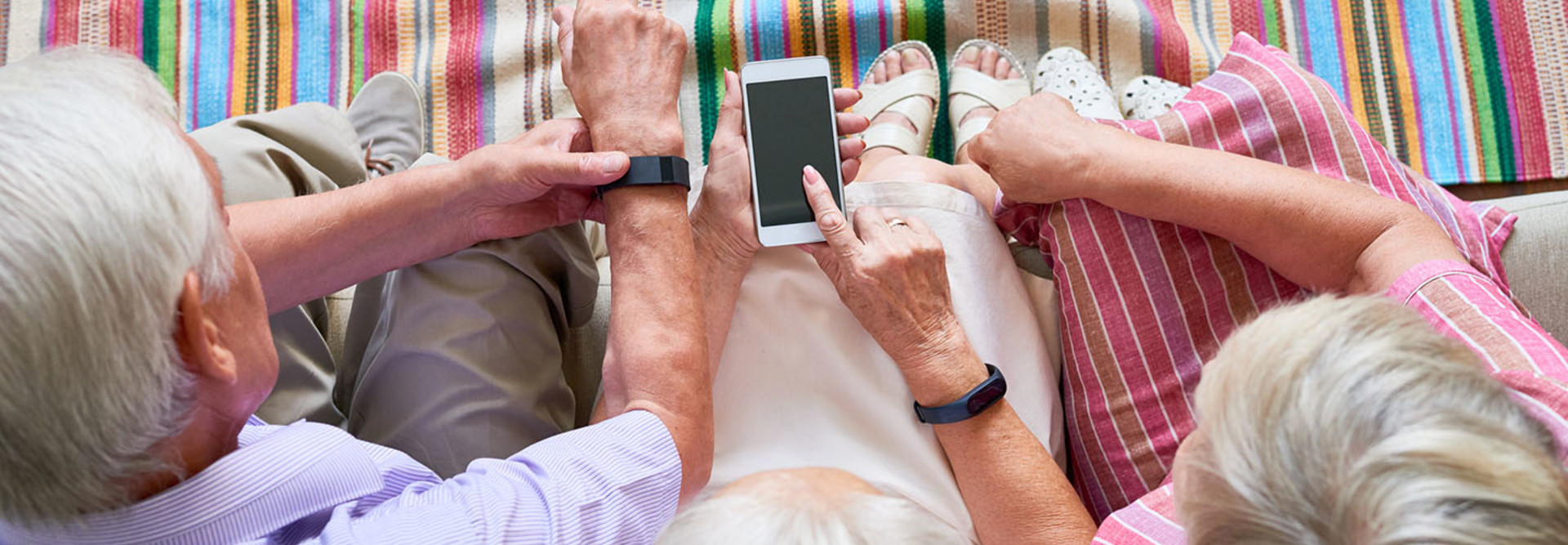Digital Tools Move the Needle on Quality of Life
As healthcare providers, it's time to take a long, hard look at the role technology will play in helping our patients live not just longer lives, but healthier and more productive ones.
In the 20th and 21st centuries, as a species, we have added more than 30 years on average to our life span through various public health innovations, but we haven't yet provided individuals with the tools necessary to use those additional years in the most productive, fulfilling way. After retirement, older adults are sometimes perceived as no longer adding value to society at large.
Now that we've extended the life span, our first priority should be to enhance the health span, or the length of time that a person is not just alive but also healthy. We can do this by giving people the tools necessary to improve their health and inspire them to maintain healthy lifestyle choices. If we do this correctly and effectively, we will turn this growing cohort of older adults from a burden into vital, connected and value-adding individuals. Connected health is a big part of the solution and there are two main factors in how health technology can move the needle on a more fulfilling health span.
SIGN UP: Get more news from the HealthTech newsletter in your inbox every two weeks!
Modern Tech Simplifies Holistic Health
Charlotte Yeh, chief medical officer at AARP, is helping society rethink aging through her work. She points out that as medical professionals, we're used to thinking of predictors of longevity in a very scientific, static way, through measures such as exposure to tobacco, high blood pressure and blood cholesterol levels. Of course, these are valid and important measures of health, but Yeh believes there are less tangible measures of health that are equally important.
The first is a sense of purpose. Simply put, people who have some purposeful activity they pursue in retirement are healthier, something I've noticed with my own patients.
The second is social connections. It turns out that isolation eats away at an individual and has the same effect on health as multiple packs of cigarettes a day.
Finally, physical activity has been known to have a huge impact on longevity. This can range from light exercise, like taking the stairs or walking each day, to more strenuous exercise, like going to the gym or even remaining a competitive athlete.
None of these measures are unique to aging, but it can help to strip away the traditional, clinical science and break it down into these three simple predictors. Of course, connected health can play a role in all three, whether it is participating in the gig economy to drive purpose, being active on social media or FaceTime to keep up social connections, or tracking your steps on a Fitbit. Modern technology certainly simplifies the move to overcome these challenges.
The Internet of Healthy Things Keeps Chronic Illness at Bay
The second important insight driving new, increasing opportunities for personal health technologies has to do with managing chronic illness. As much as we'd all like to stay healthy and die peacefully at a ripe old age, the fact is, we all suffer from system wear and tear and require more illness management as time goes on. The issue is that, very soon, we won't have enough healthcare providers and caregivers to tend to the aging population. In fact, by 2030, more than 20 percent of the U.S. population will be age 65 or older, compared with just 13 percent in 2010, according to the U.S. Census Bureau.
When it comes to managing the chronic disease epidemic, our healthcare system is falling short, unable to help patients sustain the kind of behavior changes required for chronic illness management. The good news is there is growing interest in creating a new paradigm for the prevention, treatment and management of chronic disease, using new tools made possible by the Internet of Healthy Things. We now have wearable trackers, mobile computing platforms and social media that can help keep patients informed and engaged in real time.
The future isn't in more hospital beds, nursing homes, medical tests and procedures. The majority of health problems today are lifestyle-related chronic conditions that cannot be conquered by the modern marvels of medicine. Effective solutions for chronic disease, which often include behavioral components, require frequent, personalized interventions that affect patient actions outside of the healthcare setting.
Connected health tools, like digital therapeutics — technology-based solutions that have an impact on disease comparable to that of a drug — can be an effective method of enabling people to better manage chronic conditions. Further, as artificial intelligence moves forward, the digital devices that have become ubiquitous in our daily lives will study human life and behavior in real time, in ways never before possible. These devices will automatically share this knowledge with humans, providing much greater insight about the inner emotional state of individuals. Combined with in-the-moment automated coaching, emotionally aware technology will create a boom in self-help.
These tools can be deployed in real time and at scale, and can do what conventional healthcare cannot: provide in-the-moment intervention and guidance. If done properly, connected health tools can help to keep people well and on track when they're outside of the doctor's office. That not only frees up doctors and other medical personnel to attend to real emergencies or challenging patient needs, but increases efficiencies and, ultimately, can decrease the cost of care.
Half of all healthcare expenditures each year go to the sickest 5 percent of patients, many of whom tend to be older. It could alleviate strain on the entire healthcare system to find better ways to identify the most vulnerable patients and provide care and interventions before these patients end up in the emergency department. Data science and predictive analytics can help identify patterns of behavior that could indicate a potential problem and intervene earlier when it's more likely to make a positive difference in patient outcomes and reduce costs.
At a time when digital and connected health solutions are needed more than ever, health tech innovations will not just improve healthcare for older adults, but will create a better and more responsive healthcare system for everyone.









